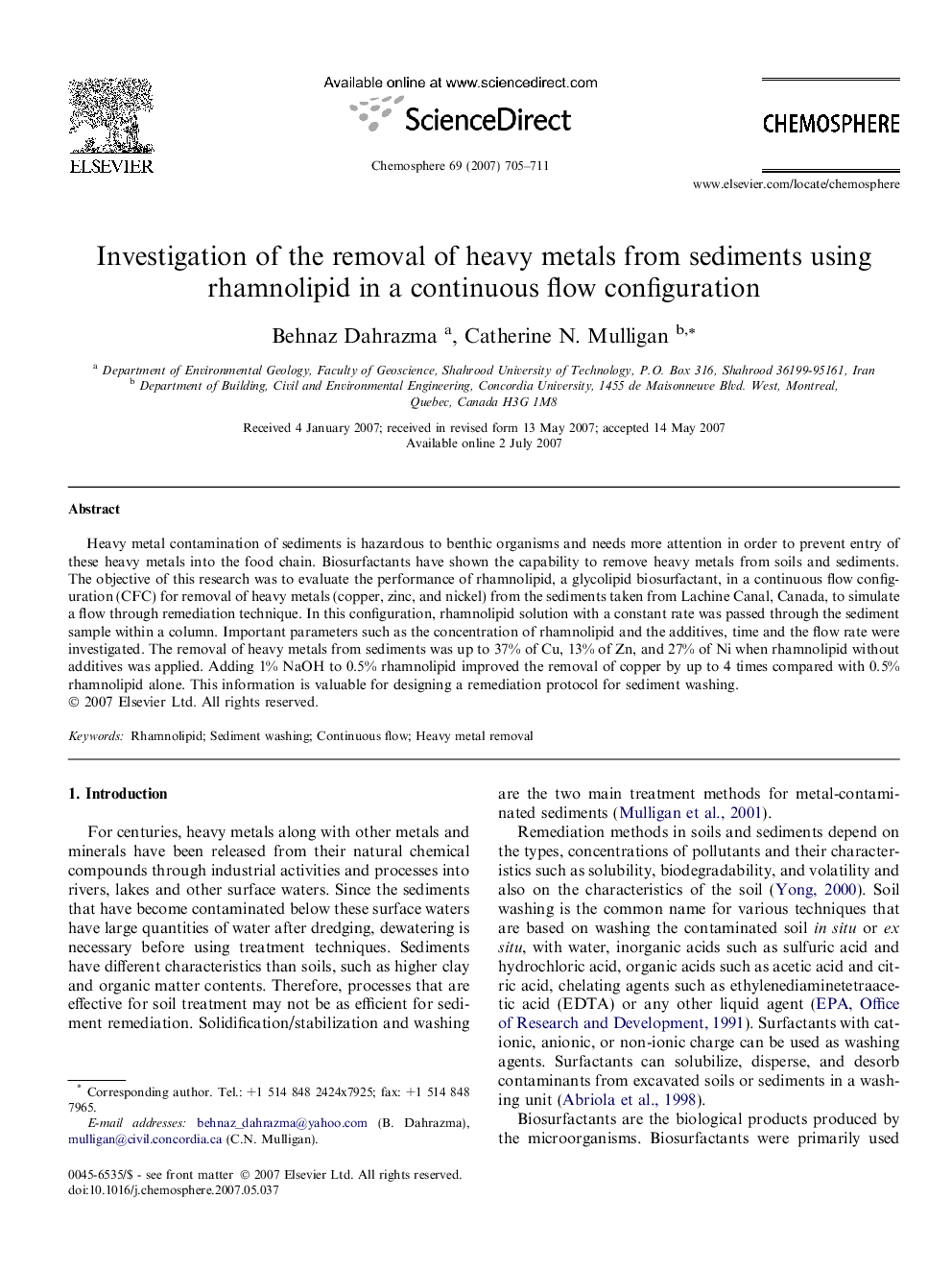| Article ID | Journal | Published Year | Pages | File Type |
|---|---|---|---|---|
| 4414731 | Chemosphere | 2007 | 7 Pages |
Heavy metal contamination of sediments is hazardous to benthic organisms and needs more attention in order to prevent entry of these heavy metals into the food chain. Biosurfactants have shown the capability to remove heavy metals from soils and sediments. The objective of this research was to evaluate the performance of rhamnolipid, a glycolipid biosurfactant, in a continuous flow configuration (CFC) for removal of heavy metals (copper, zinc, and nickel) from the sediments taken from Lachine Canal, Canada, to simulate a flow through remediation technique. In this configuration, rhamnolipid solution with a constant rate was passed through the sediment sample within a column. Important parameters such as the concentration of rhamnolipid and the additives, time and the flow rate were investigated. The removal of heavy metals from sediments was up to 37% of Cu, 13% of Zn, and 27% of Ni when rhamnolipid without additives was applied. Adding 1% NaOH to 0.5% rhamnolipid improved the removal of copper by up to 4 times compared with 0.5% rhamnolipid alone. This information is valuable for designing a remediation protocol for sediment washing.
